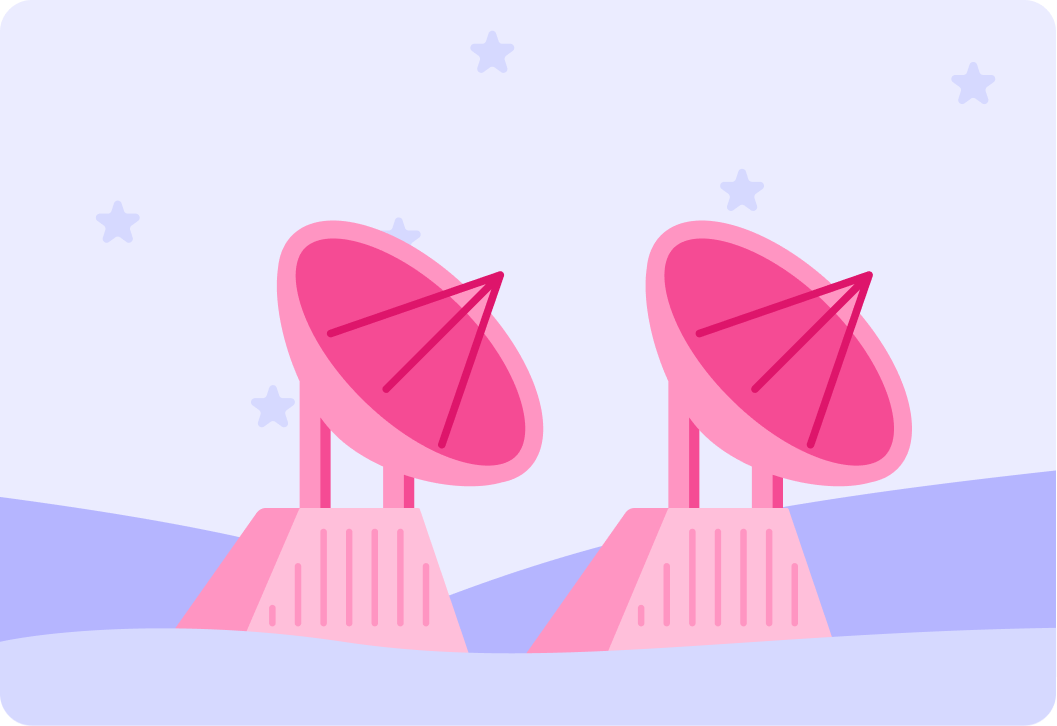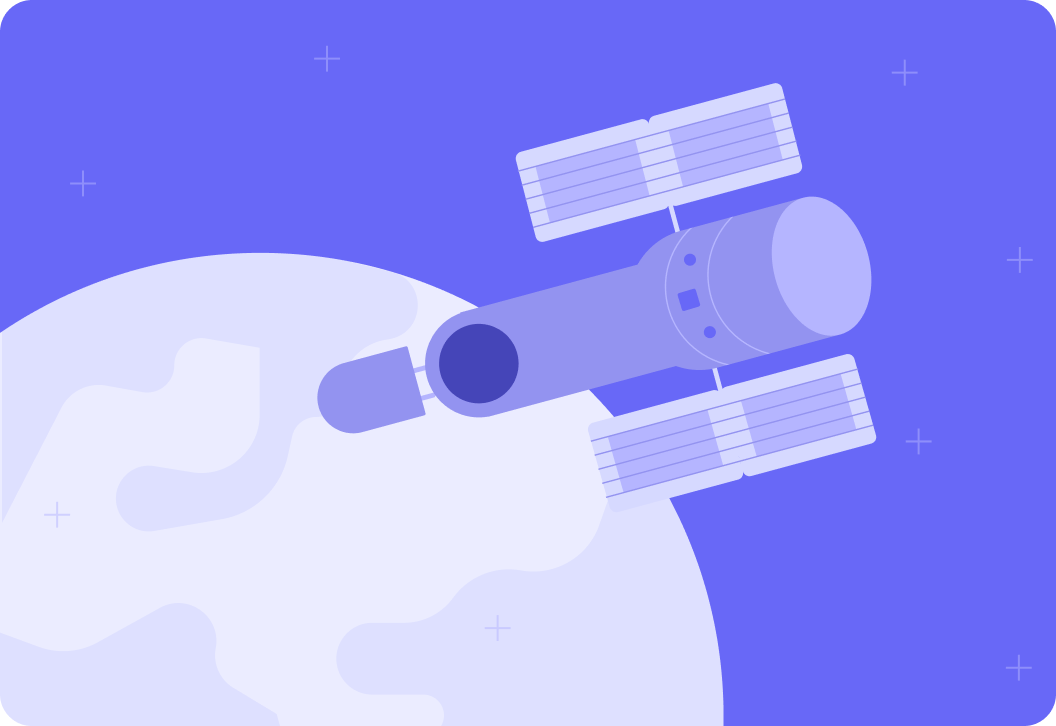YOU ARE LEARNING:
Observation of Stars

Observation of Stars
Our methods of observing the Universe have changed over time, from stargazing with our eyes to outer-space telescopes.
Observing the Universe
Over time, we have developed many ways of observing the Universe that have allowed scientists to take very clear pictures of galaxies far far away
This lesson looks at how these techniques and technologies have developed over time.
The first people to look up at the sky had no technology other than their eyes. What sort of light allows us to see with our eyes?

We can see stars because they emit visible light which reaches us directly here on Earth
In fact, stars emit light in all directions, and some of it bounces off planets or other bodies, so we can see those too on the night sky, like the Moon, Venus or Mars.
Through observations with the naked eye, we have mapped the positions of stars, comets and planets.
What kind of equipment do we use to see things more clearly and further away in the Universe than what we can see with the naked eye?
A) A magnifying glass B) Telescopes C) Microscopes


The first telescope was invented as early as 1608!
It was invented in the Netherlands by Hans Lippershay.

As knowledge of how light works improved, so did the construction of telescopes.
In 1611, Johannes Kepler described how they could be improved by using a convex objective lens and a convex eyepiece lens, and in 1668 Isaac Newton went on to invent reflecting telescopes making use of mirrors.

Telescopes use lenses or mirrors to magnify images so we can see them in more detail.
Today, over 400 years after the first telescope was invented, telescopes are much bigger and much more sensitive, so we can observe even the faintest of stars, unbelievable distances away!

Optical telescopes, based on Earth, receive light that passes from the Universe through the atmosphere.
It can be hard to get good images because different things might interfere with the light before it reaches the telescope. Pick all the things you think might interfere with the light.

You can select multiple answers
So the light from the stars can get distorted or even obstructed by air pollution, light pollution and the gasses in the atmosphere.
This means that the images of the sky seen from Earth can be unclear.
So where do you think might be a good place to build a telescope?

Optical telescopes make use of visible light, so we want to build them in places with as little light and atmospheric gasses as possible.
We want dark conditions as high up as possible, like on top of a mountain.
Radio telescopes are also based on Earth, but they don't use visible light to make observations. What do you think they use?
A) UVA rays
B) Gamma rays
C) Radio waves


So radio telescopes detect radio waves. They are usually very large and expensive, but there are a few reasons why they are sometimes better than optical telescopes. Pick the two reasons you think are correct.

You can select multiple answers
So radio waves can be distorted if there is too much moisture in the atmosphere. Also, they are really really big, and they work better when there are a number of them connected to each other. Where do you think we like to build radio telescopes?

Not all EM wavelengths reach the Earth’s surface
For example, UVA light does not penetrate the atmosphere, but astronomers are still very interested in it. So to be able to observe those wavelengths, we have launched telescopes as satellites into space!

Select all the options that you think are benefits of having satellite-based telescopes.

You can select multiple answers
We can also fit cameras to telescopes so we can zoom in for more detail and track movements of stars over time.
This picture, for example, was taken by the Hubble Space Telescope in 1995. This telescope has detectors for both visible, infrared and ultraviolet light.

This picture took 10 days to take!
The telescope pointed to a seemingly empty area of space, but over the course of 10 days, the telescope retrieved different data and when we put it together, this was the image we got.

This image is called the Hubble Deep Field
The light from the galaxies in the picture has taken millions of years to reach us. In other words, the light we're seeing was emitted millions of years ago. This means we're basically looking millions of years back in time! This was what the galaxies looked like millions of years ago, not what they look like today.

Summary
Our methods of observing the Universe have changed over time.
To begin with, we were just using our eyes, but then we got optical telescopes and then radio telescopes. Today, we're even sending telescopes up into space!
There are Earth-based and space-based telescopes.
Each type has advantages and disadvantages.
Optical telescopes are Earth-based
They take in visible light, so the images they take are affected by gasses in the atmosphere and light and air pollution. They are dependent on it being night time and clear weather.
We want to build them on mountain tops to reduce how much atmosphere the telescope has to look through, because the gasses in the atmosphere distort the image.
Radio telescopes are also Earth-based
They take in radio waves and some long microwaves. They work day and night and in cloudy weather, but they are affected by moisture in the atmosphere.
Therefore, we want to build them in very dry places, like in the middle of the desert.
Satellite telescopes are space-based
For example, the Hubble Space Telescope can detect EM wavelengths that don't even make it down through Earth's atmosphere. It detects visible light as well as infrared and ultraviolet light.
However, satellite telescopes are super expensive to make and very hard to fix when they break, because they float about in outer space.
When we look at pictures of the Universe, we are actually looking back in time!
Amongst other things, scientists are using these images to see what the universe looked like in the past and predict how it is going to evolve.
